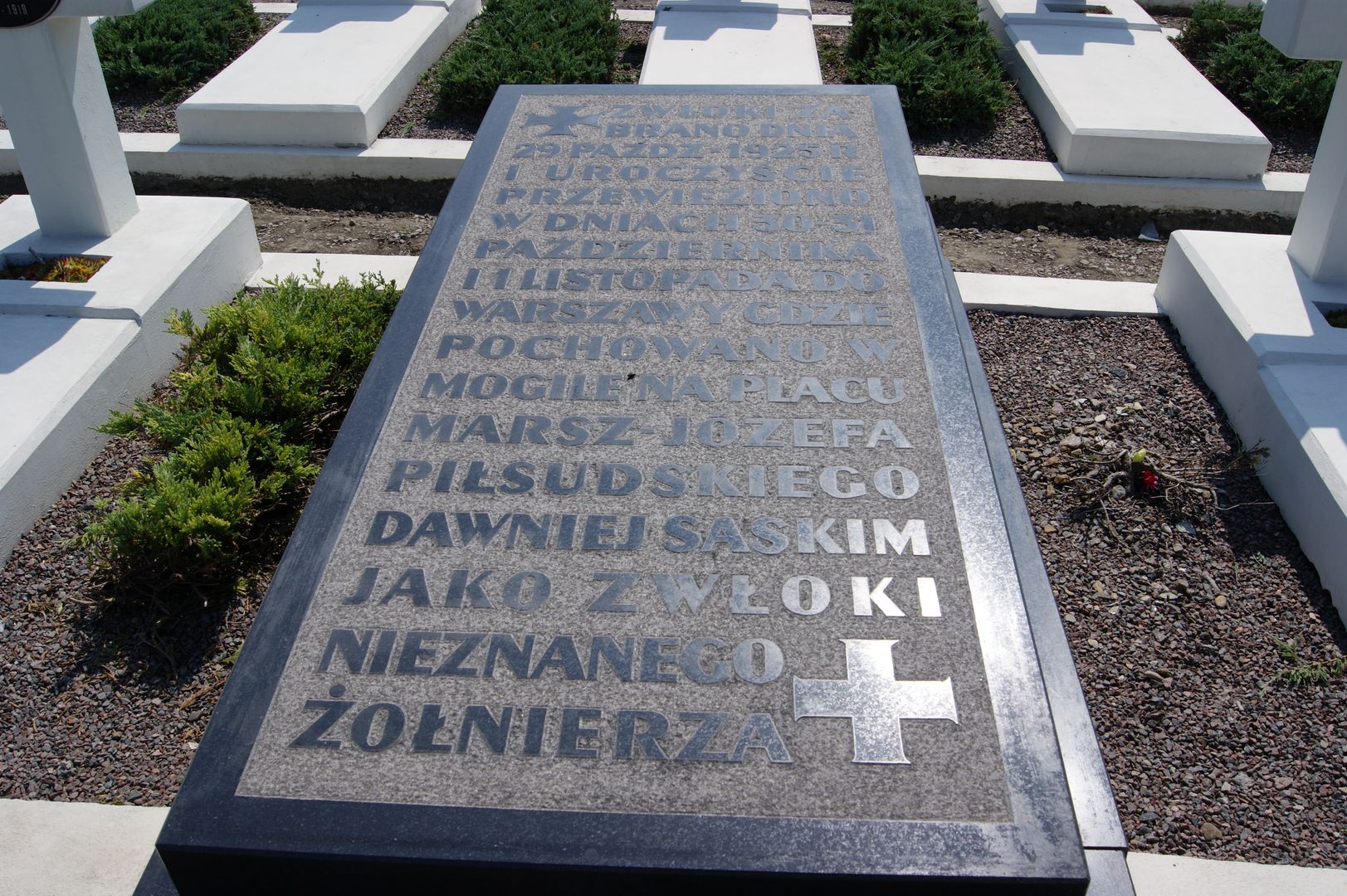Tomb of the Unknown Soldier in Warsaw
6.89

Overview
The Tomb of the Unknown Soldier in Warsaw, located at Marshal Józef Piłsudski Square, is a monument commemorating soldiers who fell in the fight for Poland's independence. Its concept originated in France after World War I, where the first Tomb of the Unknown Soldier was established in Paris in 1920. In Poland, the first initiatives to build such a monument took place in 1921, and the Warsaw Tomb was unveiled on November 2, 1925. Its creator was Stanisław Kazimierz Ostrowski, and the monument consists of the three central arches of the colonnade of the Saxon Palace, where the remains of an unidentified soldier from Lwów were laid to rest. The Tomb has undergone various stages throughout history, including severe damage during World War II when the Saxon Palace was blown up. After the war, it was rebuilt, preserving its original style, but changes were also introduced—a new tombstone, granite plaques depicting battlefields, and decorative elements. The architecture of the tomb symbolizes reverence for the fallen, and its design reflects classicism. Culturally, the tomb has played an important role in Polish society; it has become a site for national ceremonies and a place for daily tributes by citizens. An interesting fact is that the honor guard here is maintained by soldiers from the Representative Regiment of the Polish Armed Forces, and the changing of the guard ceremonies take place with the participation of the highest state authorities. The Tomb of the Unknown Soldier also serves as an interesting element of Polish iconography; on the occasion of anniversaries, various actions have been taken to commemorate its significance, including the issuance of coins by the National Bank of Poland. An added value of the site are the plaques commemorating both historical campaigns and the victims of World War II, emphasizing the endurance of national memory and the symbolic nature of the Tomb as a place uniting citizens in tribute to the fallen.
Location
Tickets
Powered by GetYourGuide
2025 Wizytor | All Rights Reserved